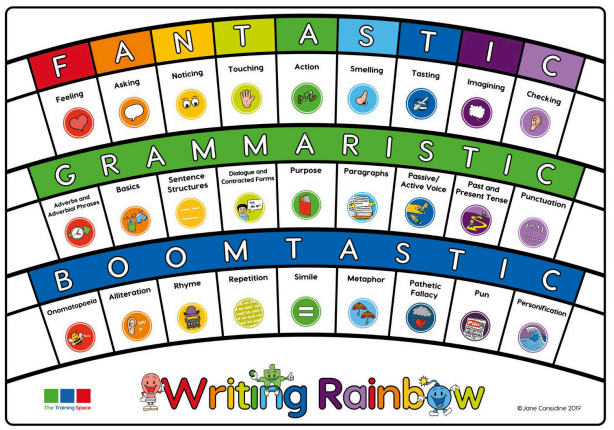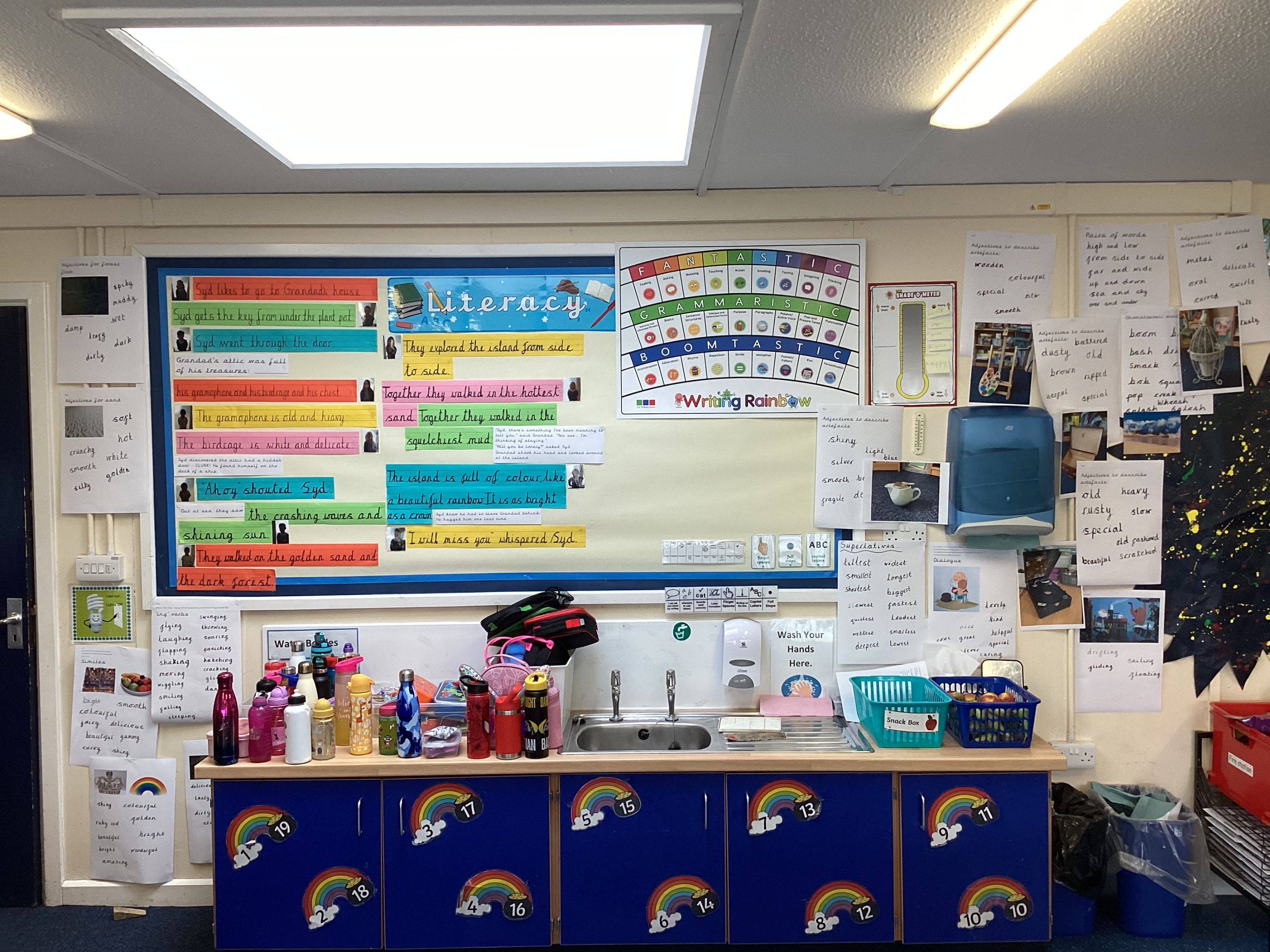
writing
Writing
From Years One to Six, children are taught through an approach called ‘The Write Stuff’ written by Jane Considine. The approach aims to provide pupils with a sense of how to be skilled writers and how to best capture their creative imagination and factual information.
Children are taught to carefully consider the audience and purpose they are writing for. The who and the whys of writing. They are encouraged to take ownership of their ideas and consider their ‘author’s voice’. New skills and vocabulary options are explicitly taught through the Writing Rainbow, modelled and explained to the children so that they are clear in their writing.

Immersing the children in a new writing unit helps to increase engagement, excitement and enjoyment of the writing process. Immersion lessons or experience days give children the opportunity to experience events and activities that are often taken for granted such as a trip to the library, music sessions or a visit to the local woods.
A writing lesson is made up of three parts. The teacher enables discussion and ‘chotting’ (chatting and jotting) through a photo, short video, soundscape or other stimulating material. The children are then shown how to put their ideas into writing. Teachers use a technique called ‘thinking out loud’ where they model the process of moving from ideas and notes into well-constructed sentences. The children are then enabled to have a go at writing their own sentences based on the teacher’s model and following the steps to success. These sentences and ideas are then celebrated on display in their classroom so children can visually see a narrative or non-fiction piece build up over time.

At the end of each unit the children are able to write their own completely independent piece, using the skills that have been developed in the previous lessons. Allowing children to write freely enables them to draw on their own experiences, acknowledge their love of reading and really show off to their audience their skills as an author.
Please see below for the Writing Long Term Plan
How can I help at home?
- Encourage children to write for pleasure.
- Take every opportunity to explore new vocabulary together, discuss new words heard or read.

